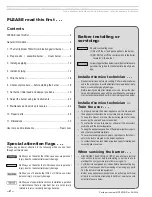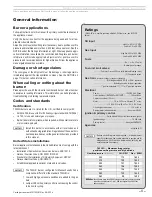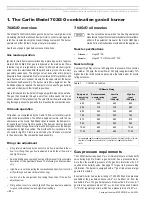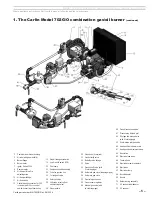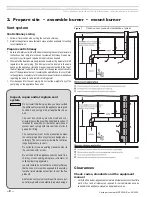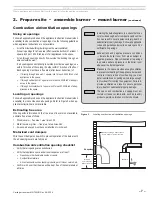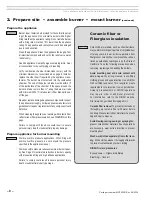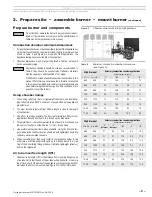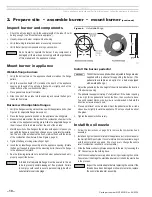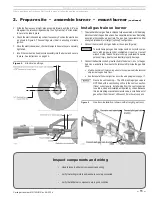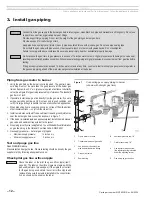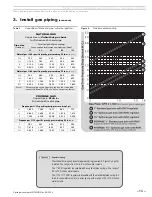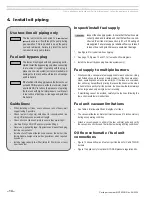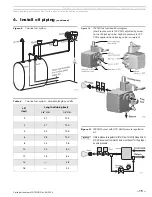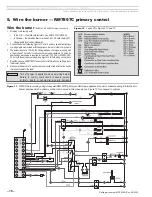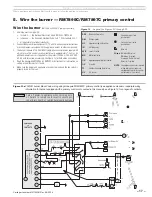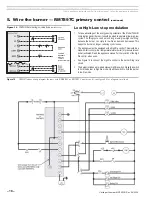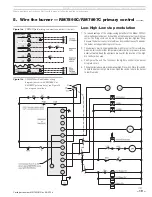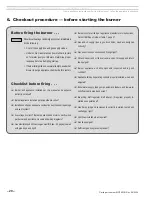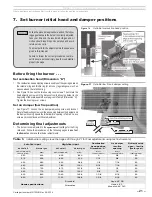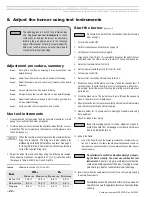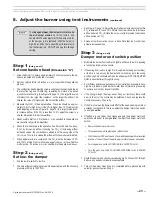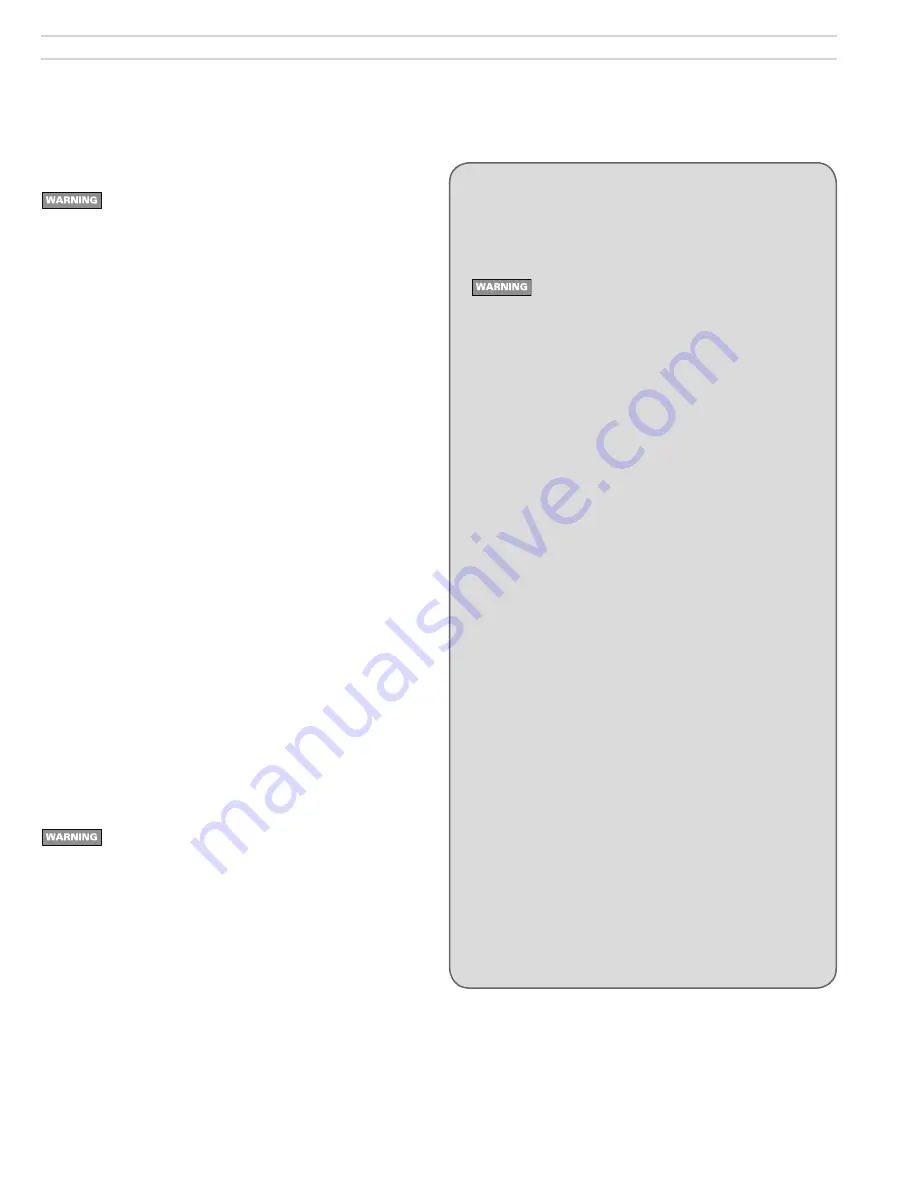
Model 702G/O Advanced gas/oil burners — Instruction manual
Carlin part number MN702GO Rev. 06/23/14
– 8 –
Where appliance instructions differ from this manual, follow the appliance instructions.
Prepare the appliance
Burner input: Install a burner sized for the normal input rat-
ing of the appliance. Do not install a burner with a higher
firing rate than the appliance rating. Do not install a burner
with a firing rate more than 10% lower than the appliance
rating. The appliance and vent system could be damaged
due to condensation.
Clean the appliance: Clean the appliance thoroughly. Test
all electrical components and verify the relief valve works
(boilers only).
Seal the appliance: Seal all flue-gas containing joints. Seal
all connections to the vent piping or breeching.
Verify combustion chamber dimensions comply with the
minimum dimensions recommended on page 9. Install or
replace chamber liner if required by the appliance manu-
facturer. The burner must not extend into the combustion
chamber. The end of the burner air tube must be within ¼"
of the inside face of the chamber. If the space around the
burner air tube is more than ¼", wrap the burner air tube
with minimum 2300-°F-rated ceramic fiber blanket to seal
off the gap.
Repair or replace damaged appliance components. Inspect
the appliance thoroughly. Follow appliance manufacturer’s
guidelines for repair or replacement of any component found
defective.
When cleaning the appliance or working with ceramic fiber
refractories or fiberglass insulation, see WARNING on this
page.
Failure to comply with the above could result in severe
personal injury, death or substantial property damage.
Prepare appliance for burner mounting
Positive overfire pressure applications: When firing with
positive overfire pressure, do not exceed the pressure
specified in the appliance manual.
Positive overfire pressure reduces maximum burner capac-
ity. See Page 3 for estimated reduction in burner capacity
with pressurized firing and high altitude applications.
Failure to comply could result in severe personal injury,
death or substantial property damage.
Ceramic fiber or
Fiberglass insulation
Ceramic fiber materials, such as chamber liners,
may contain carcinogenic particles (chrystobalites)
after exposure to heat. Airborne particles from
fiberglass or ceramic fiber components have been
listed as potentially carcinogenic by the State of
California. Take the following precautions when
removing, replacing and handling these items.
Avoid breathing dust and avoid contact with
skin or eyes. Wear long-sleeved, loose-fitting
clothing, gloves and eye protection. Use a NIOSH
N95 certified respirator. This respirator meets
requirements for protection from chrystobalites.
Actual job requirements or NIOSH regulations
may require other or additional protection.
For information, refer to the NIOSH website,
http://www.cdc.gov/niosh/homepage.html.
Ceramic fiber removal: To prevent airborne dust,
thoroughly wet ceramic fiber with water before
handling. Place ceramic fiber materials in a plastic
bag and seal to dispose.
Avoid blowing, tearing, sawing or spraying fiber-
glass or ceramic fiber materials. If such operations
are necessary, wear extra protection to prevent
breathing dust.
Wash work clothes separately from other laun-
dry. Rinse clothes washer thoroughly afterwards
to prevent contamination of other clothing.
NIOSH First aid procedures:
Eye exposure — irrigate immediately
Breathing — fresh air.
2. Prepare site • assemble burner • mount burner
(continued)


